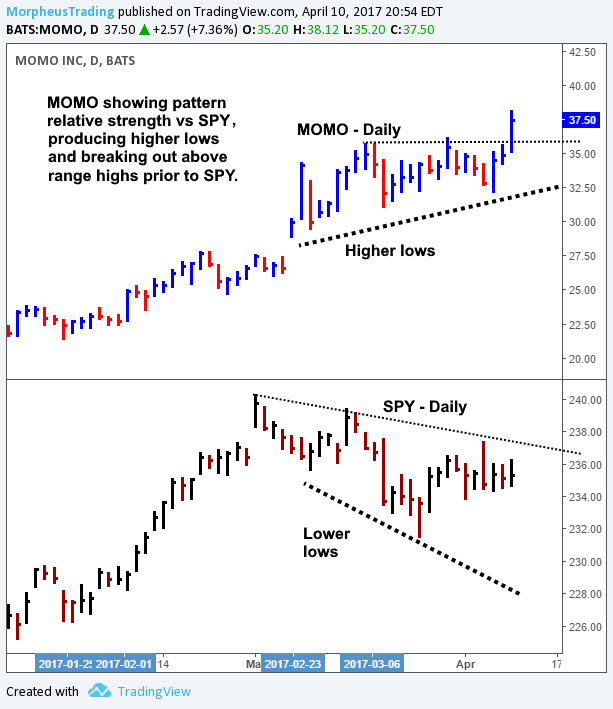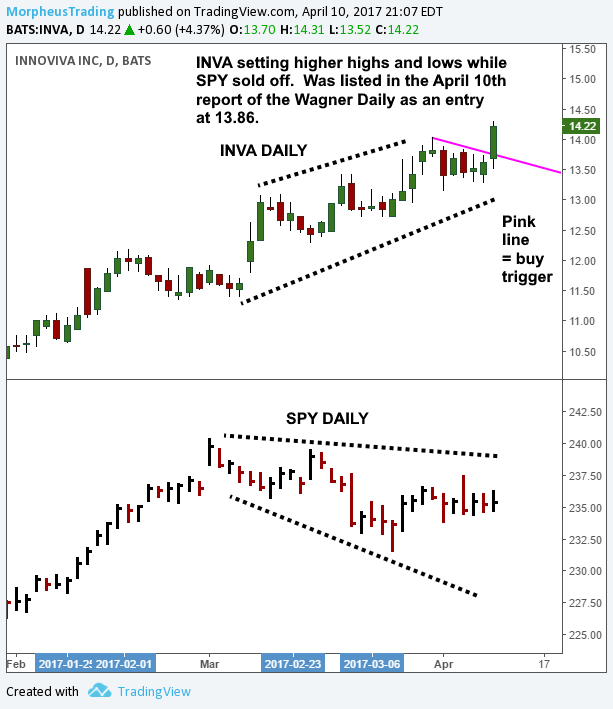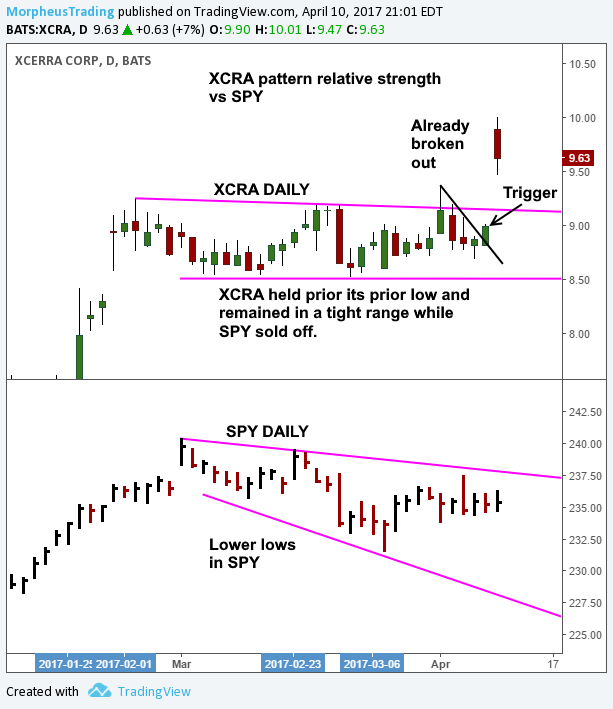In a raging bull market, you can do pretty well by simply buying nearly any stock that breaks out to new highs on strong volume.
After all, as JFK famously said in 1963, “a rising tide lifts all boats.”
But when the stock market is in correction mode, breakouts and other reliable bullish patterns have a greater risk of failing.
If you’ve been getting chopped up by your trading lately, you know exactly what I mean.
In sloppy markets like the current environment, you need a more effective stock picking strategy and relative strength trading is the answer.
Continue reading to find out how relative strength trading can increase your profits and lower your frustration now.
Not In Kansas Anymore
The overall stock market trend remains bullish, with most broad market indices still trading above their respective 50-day moving averages.However, the short-term trend has been choppy and most indexes have been hanging around their (flat to slightly declining) 20-day moving averages in recent weeks.When the intermediate-term market uptrend is still intact, but the short-term trend is sideways, it can be challenging to find low-risk stock breakouts to trade.This is because bullish momentum helps stocks trend higher, but choppy and indecisive near-term momentum makes it difficult to remain in positions without your stops getting hit.
As such, it is crucial you do not continue to operate as though stocks are still in a strong (short-term) bull market that can generate winning stock trades because of a dominant market trend.
With the major averages now in “chop mode,” most new trade entries will have a tough time following through due to the lack of help from the broad market.
It’s time to be more selective and more careful.
It’s time to start trading only stocks with clear relative strength to the market.
Relatively Simple
The concept of pattern relative strength trading is relatively simple.
When the short and intermediate-term timeframes of the market are out of sync with each other, most individual stocks simply trade alongside of the averages, content to oscillate in a range.
But one benefit of a choppy, range-bound market is that it’s faster and easier to spot stocks that are clearly outperforming the S&P 500 or other indexes.
Stocks with the best relative strength will continue printing “higher highs” and/or “higher lows” while the S&P 500 is doing the opposite.
At the very least, stocks with relative strength should at least continue holding onto support of a prior low while trading in a tight range.
Quiz Time
QUESTION: If a stock is so strong that it continues higher (or at least sideways) while the S&P 500 and other major indices are trending lower, what happens when the S&P 500 eventually finds support and starts rallying again?
ANSWER: Aided by a broad-based bounce, the stock with relative strength rockets to new highs (way ahead of the major indices). As a bonus, if the S&P 500 continues much too low before bouncing, stocks with relative strength are typically the last to fall.
4 Stocks With Relative Strength Now
With the S&P 500 drifting sideways to lower for nearly two months, The Wagner Daily has been focused primarily on buying stocks with relative strength.
Below are four clear examples of stocks currently showing relative strength to the S&P 500 that subscribers traded in recent weeks.
1. Momo Inc (NASDAQ:MOMO)
Chinese Internet ADR Momo ($MOMO) has been on our radar since we first mentioned it as a buy setup in the Morpheus chat room (included with Wagner Daily service) on February 8.
Subscribers were alerted to the buy entry near the $24 level, enjoyed a 30% rally in $MOMO, then sold in the low $30s a month later.
On April 6, $MOMO re-appeared on our intraday buy watchlist after forming a bullish reversal candlestick.
The next day, subscribers once again received a heads-up that $MOMO was a valid buy entry around the $35 area.
On April 10, the stock broke out from its base to a new high and we remain long the position (from chat room entry).
Looking at the chart below, notice how pattern relative strength became apparent well before that breakout:

As the S&P 500 (SPDR S&P 500 (NYSE:SPY) as ETF proxy) began forming lower lows in March, $MOMO started printing higher lows.
This early display of pattern relative strength enabled the stock to breakout to new highs as soon as the S&P 500 began stabilizing in April.
2. Innoviva Inc (NASDAQ:INVA)
Like Momo above, Innoviva ($INVA) is an excellent example of a stock with relative strength.
While the S&P 500 ($SPY) has been in pullback mode, $INVA has been setting higher highs and higher lows.
We listed $INVA in the April 10 issue of our stock trading newsletter as a potential buy entry at $13.86.
Fueled by pattern relative strength, $INVA broke out to new highs that day while the S&P 500 was stagnant:

3. Xcerra Corp (NASDAQ:XCRA)
$XCRA was another trade setup shared with subscribers in the chat room on April 7, with a potential buy entry above the high of the previous day’s bullish reversal candlestick.
The next day, $XCRA gapped sharply higher on the open and subscribers sold into strength for a quick 10% gain on a two-day hold:

Admittedly, the massive gap up on April 10 was just lucky.
However, when a stock exhibits relative strength to the broad market, it only takes a little bit of good news to generate an overly positive price reaction.
That’s why, after nearly two decades of trading stocks, we have learned that “luck” happens a lot more when you’re already trading stocks with relative strength to the market.
By the way, did you notice that the relative strength in $XCRA is not as obvious as the first two examples?
Both $MOMO and $INVA were setting higher lows while the S&P 500 was setting lower lows.
But with $XCRA, the stock merely held support of its prior lows and traded in a sideways range.
This is generally not as bullish as a stock that’s setting higher lows instead, but it still indicates relative strength.
4. PowerShares WilderHill Clean Energy (NYSE:PBW)
The last example of relative strength is PowerShares Clean Energy ETF (NYSE:XLE) ($PBW), a green ETF that tracks a group of stocks in the clean energy sector.
While the first three examples all showed early relative strength versus the S&P 500, $PBW generally traded in sync with the S&P 500 during the first month of the market pullback.
However, $PBW began showing relative strength about one week ago, which was confirmed by its April 10 base breakout to a new high:

Time For Action
Nobody knows how long the stock market will continue to oscillate in a range before establishing a new, short-term trend.
If your usual bullish trade setups are not working in this environment, don’t fight it!
Now that you know how to find stocks with relative strength, use that powerful tool in your trading arsenal instead.
Don’t overcomplicate it either.
In choppy markets, just stick to trading stocks that hold up best while the market moves sideways to lower.
If you don’t have the time or desire to scan for stocks with the most relative strength now, we’ve still got you covered.
